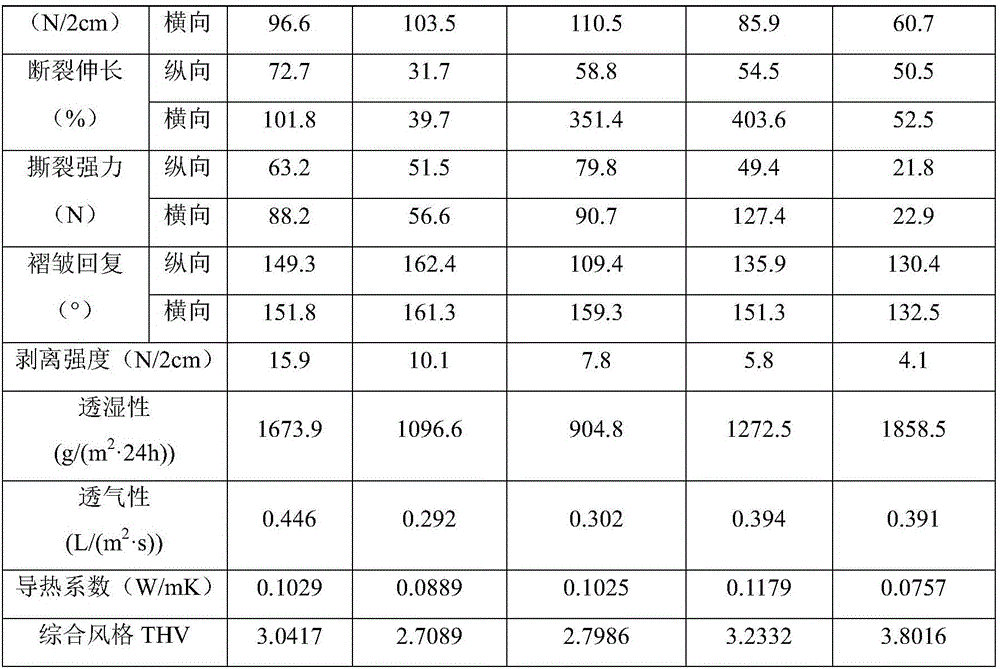Preparation method for spun-bonded filament orange petal-type superfine leather
A technology of microfiber leather and silk orange, applied in textiles, papermaking, non-woven fabrics, etc., can solve problems such as environmental pollution, achieve the effects of eliminating environmental pollution, reducing equipment investment and energy consumption, and improving grades
- Summary
- Abstract
- Description
- Claims
- Application Information
AI Technical Summary
Problems solved by technology
Method used
Image
Examples
preparation example Construction
[0017] The present invention provides a kind of preparation method of spunbonded filament pie-shaped superfiber leather, it is characterized in that this preparation method comprises the following steps:
[0018] 1) Preparation of two-component ultrafine fiber spunbonded spunlace nonwoven fabric: firstly, the two kinds of polymer slices are respectively introduced into the drying tower for pre-crystallization and drying treatment, extruded and melted by a screw extruder, melt filter After being filtered, it enters the spinning box; then, the segmented segment is used to form a web by drawing and spinning on a two-component spunbond equipment, and finally the fiber web output by the web forming machine enters the spunlace area after pre-humidification. Under the pressure of the water flow, the fibers are opened and entangled together; after drying, trimming, and winding into rolls, a two-component ultrafine fiber spunbond spunlace non-woven fabric (non-woven fabric for short) is...
Embodiment 1
[0030] 1) Preparation of two-component ultrafine fiber spunbonded spunlace nonwoven fabric: firstly, polyester / nylon 6 slices are respectively introduced into the drying tower for pre-crystallization and drying treatment, extruded and melted by a screw extruder, and the melt is filtered After being filtered by the filter, it enters the spinning box; then, it uses the orange segment spinning assembly, and is drawn and spun into a web on a two-component spunbond equipment. Finally, the fiber web output by the web forming machine enters the spunlace area after pre-humidification. Under the pressure of the water flow, the fibers are opened and entangled together; after drying, trimming, and winding into rolls, the grammage is 80g / m 2 Two-component microfiber spunbond spunlace nonwovens. The mass ratio of polyester:nylon 6 is 70:30. After spunlace opening, the opening rate is 85%, and the single filament fineness can reach 0.1D.
[0031] 2) Preparation of the adhesive layer: First...
Embodiment 2
[0043] 1) Preparation of two-component ultrafine fiber spunbonded spunlace nonwoven fabric: firstly, polyester / nylon 6 slices are respectively introduced into the drying tower for pre-crystallization and drying treatment, extruded and melted by a screw extruder, and the melt is filtered After being filtered by the filter, it enters the spinning box; then, it uses the orange segment spinning assembly, and is drawn and spun into a web on a two-component spunbond equipment. Finally, the fiber web output by the web forming machine enters the spunlace area after pre-humidification. Under the pressure of the water flow, the fibers are opened and entangled together; after drying, trimming, and winding into rolls, the grammage is 80g / m 2 Two-component microfiber spunbond spunlace nonwovens. The mass ratio of polyester:nylon 6 is 70:30. After spunlace opening, the opening rate is 85%, and the single filament fineness can reach 0.1D.
[0044] 2) Treatment of two-component ultrafine fib...
PUM
| Property | Measurement | Unit |
|---|---|---|
| Thickness | aaaaa | aaaaa |
| Monofilament denier | aaaaa | aaaaa |
| Modulus | aaaaa | aaaaa |
Abstract
Description
Claims
Application Information
 Login to View More
Login to View More - R&D
- Intellectual Property
- Life Sciences
- Materials
- Tech Scout
- Unparalleled Data Quality
- Higher Quality Content
- 60% Fewer Hallucinations
Browse by: Latest US Patents, China's latest patents, Technical Efficacy Thesaurus, Application Domain, Technology Topic, Popular Technical Reports.
© 2025 PatSnap. All rights reserved.Legal|Privacy policy|Modern Slavery Act Transparency Statement|Sitemap|About US| Contact US: help@patsnap.com


